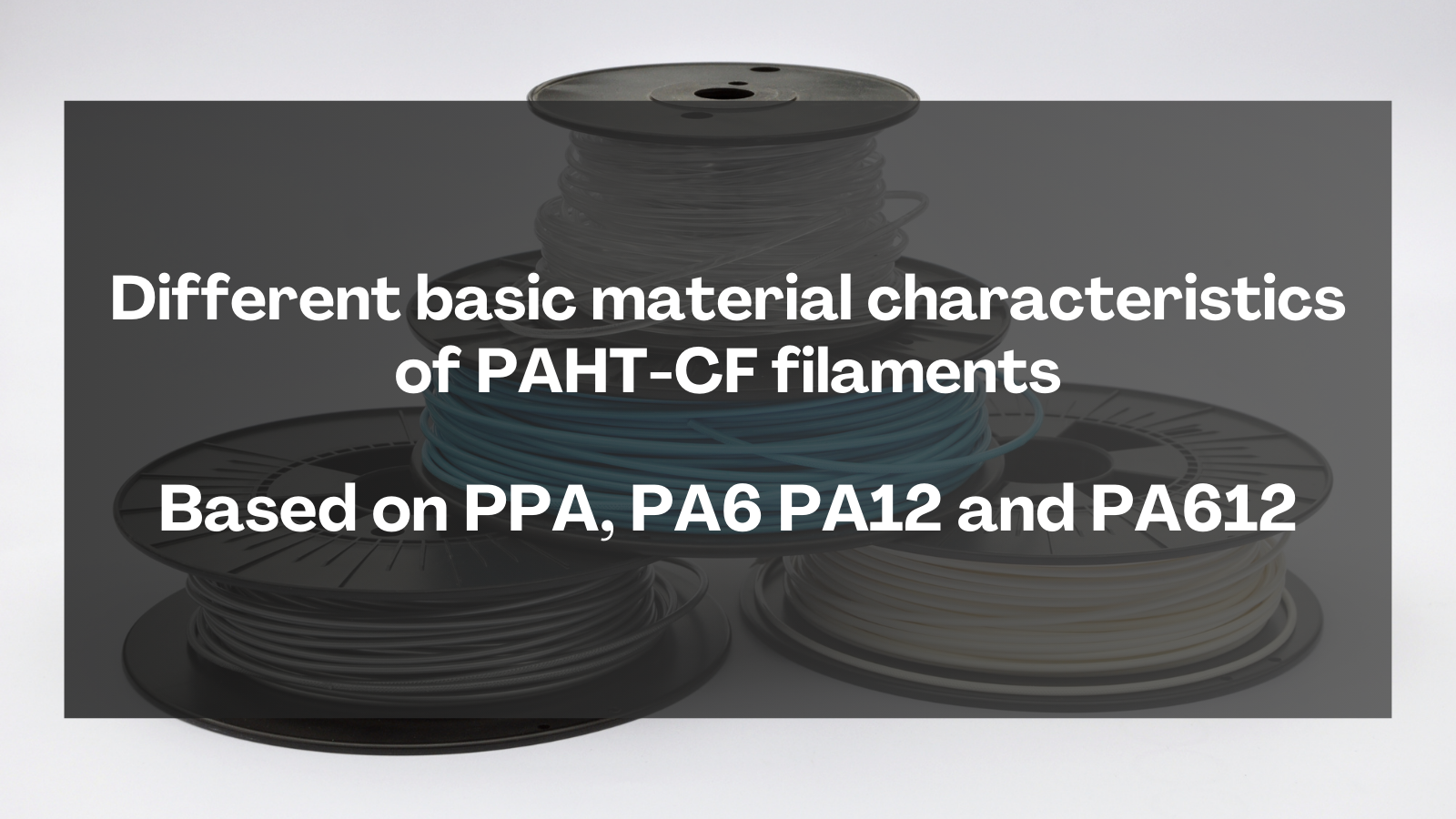In the realm of high-performance 3D printing, selecting the right filament material is crucial for achieving optimal results, especially in demanding applications. This blog will explore the composition characteristics and performance comparison of common PA-based (polyamide) materials for PAHT filaments, such as PPA, PA6, PA12 and PA612 copolymers.
Material Explanation
- PPA (Polyphthalamide) Nylon
PPA Nylon is a high-performance engineering thermoplastic renowned for its exceptional mechanical strength, chemical resistance, and thermal stability. It is specifically designed for demanding applications in industries such as automotive, aerospace, electronics, and industrial manufacturing. PPA Nylon exhibits excellent dimensional stability, low moisture absorption, and resistance to a wide range of chemicals. Its high glass transition temperature (Tg) and melting point make it particularly well-suited for parts exposed to elevated temperatures and mechanical stress.
Siraya Tech PAHT-CF (PPA-Based) 69.99 usd per 1kg
- PA6 (Nylon 6)
PA6 is a widely used engineering thermoplastic known for its good mechanical properties, chemical resistance, and ease of processing. It is often used in applications where moderate strength and durability are required, such as automotive components, industrial machinery, and consumer goods. However, PA6 has a higher moisture absorption rate, which can affect its dimensional stability and performance in humid environments.
- PA12 (Nylon 12)
PA12 is another popular nylon variant characterized by its lower density, higher flexibility, and better moisture resistance compared to PA6. It is commonly used in applications that require flexibility and low weight, such as flexible tubing, wire sheathing, and sports equipment. PA12 also offers good chemical resistance and is easier to print due to its lower melting temperature.
- PA612 Copolymers
PA612 is a copolymer of PA6 and PA12, combining the advantages of both materials. It offers a good balance of mechanical strength, flexibility, and low moisture absorption. PA612 is used in a variety of applications, including automotive parts, electrical connectors, and industrial components, where both strength and dimensional stability are important.
Siraya Tech Fibreheart PAHT-CF is based on PPA Nylon, distinguishing it from other common 3D printing materials like PA6, PA12, and PA612 copolymers.
Here's a comparison chart idea to highlight the differences between PPA (Polyphthalamide), PA6 (Nylon 6), PA12 (Nylon 12), and PA612 copolymers:
|
Property |
PPA (Polyphthalamide) |
PA6 (Nylon 6) |
PA12 (Nylon 12) |
PA612 Copolymers |
|
Mechanical Strength |
Excellent |
Good |
Moderate |
Good |
|
Thermal Stability |
High |
Moderate |
Moderate |
Good |
|
Chemical Resistance |
Excellent |
Good |
Good |
Very Good |
|
Dimensional Stability |
Excellent |
Moderate |
Good |
Good |
|
Moisture Absorption |
Low |
High |
Low |
Low |
|
Glass Transition Temperature (Tg) |
High (~130°C) |
Moderate (~60°C) |
Low (~40°C) |
Moderate (~80°C) |
|
Melting Point |
High (~300°C) |
Moderate (~220°C) |
Low (~178°C) |
Moderate (~215°C) |
|
Printability |
Challenging |
Moderate |
Easy |
Moderate |
|
Application Suitability |
Automotive, Aerospace, Industrial |
General Engineering |
Consumer Goods, Flexible Parts |
Industrial, Consumer Goods |
Siraya Tech Fibreheart PAHT-CF stands out as a high-performance filament due to its PPA Nylon composition, offering exceptional mechanical strength, thermal stability, and chemical resistance. This makes it ideal for demanding industrial applications, outperforming common Filament based on PA6, PA12, and PA612 copolymers in many aspects of requirements.
By understanding the properties and advantages of PPA Nylon, you can make informed decisions for your 3D printing projects, ensuring the best results for your specific application needs.
Have you used PAHT-CF or other PA-based filaments? Share your experiences and tips in the comments below!
The article content is compiled from:
Xometry on PPA
Mebra on PPA
Piedmont CMG on PPA


1 comment
Marty
I’ve used PA6-CF and PA612-CF so far. PA6 did surprisingly well as a gate latch. But the PA612 didn’t absorb nearly as much moisture, sitting out in the rain and didn’t start sagging. So I haven’t had to retorque it at all. I don’t if the higher impact resistance of the PA6, was a smarter idea, Or to rigidness of the PA612.
Thank you for writing this article. I’m about to order a spool of you PPA-CF.